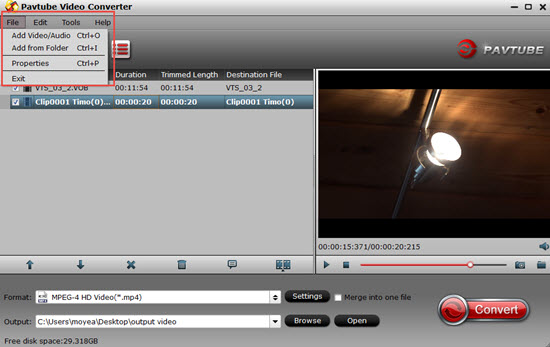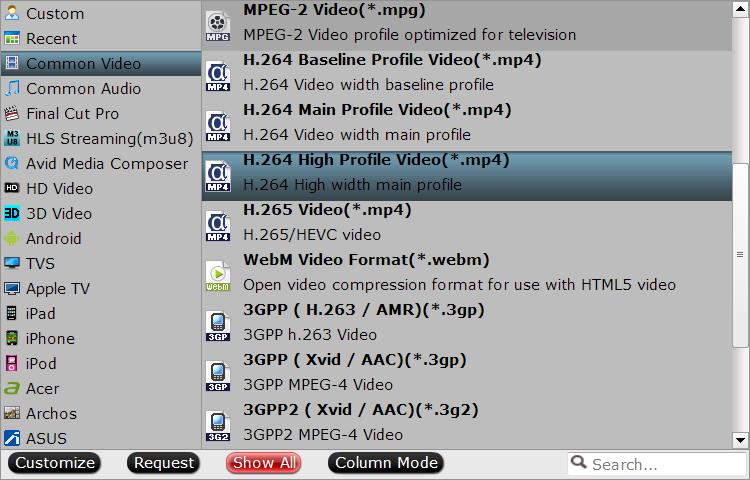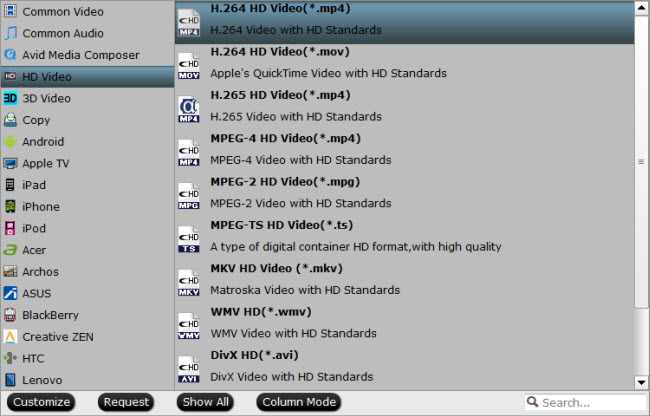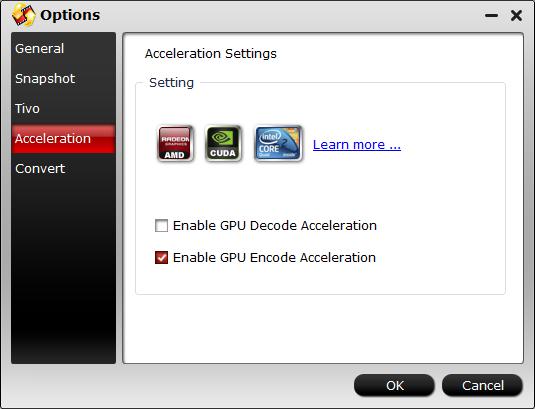For PC users who have recorded some video with your newly purchased DJI Mavic 2 Pro, you may try to play the Mavic 2 Pro 4K video with VLC media player. The following article will show you how to smoothly view Mavic 2 Pro 4K video with VLC.
Play Mavic 2 Pro 4K on VLC using CPU or hardware acceleration
The DJI Mavic 2 Pro record 4K video by utilizing the H.265/HEVC codec, you can play this video on your computer with VLC either by software decoding or hardware decoding.
Software decoding
Your PC and VLC media player can attempt to play the Mavic 2 Pro 4K HEVC video, however, since this decoding method is using your computer’s CPU to do that math, it might stutter or be very slow.
Hardware decoding
For those people who pursue for high efficiency, it would be good idea for you to turn to hardware decoding. The condition is that you have a graphic card and a video player that both support HEVC hardware decoding. Your computer will need one of the following pieces of hardware in order to hardware decode HEVC video:
– Intel 6th generation “Skylake” or newer CPUs
– AMD 6th generation “Carizzo” or newer APUs
– NVIDIA GeForce GTX 950, 960, or newer graphics cards
– AMD Radeon R9 Fury, R9 Fury X, R9 Nano, or newer graphics cards
As for VLC, the good news is that VLC 3.0 now supports some sort of HEVC hardware decoding at least for certain cards, but you will have to enable hardware acceleration in your player of choice for it to work properly.
Steps to enable hardware acceleration in VLC
To enable hardware acceleration in VLC, head to Tools > Preferences.
Click the “Input / Codecs” tab, click the “Hardware-accelerated Decoding” box under Codecs, and set it to “Automatic”.
Tips: On Windows, H.264, MPEG-1, MPEG-2, WMV3, and VC-1 are all hardware accelerated. On a Mac, only H.264 is hardware accelerated. Videos that aren’t hardware accelerated will play normally; VLC will just use your CPU and you won’t get any battery life improvement.
From above information, we can see that although VLC supports hardware decoding, however, HEVC/H.265 codec are not in the supported list on nether Windows or Mac system. VLC will try to play the 4K HEVC video by using your computer’s CPU, which may let the 4K video playback very choppy.
Best solution to smooth play Mavic 2 Pro 4K on VLC
Since VLC only supports to playback 4K H.264 video by using hardware acceleration, then the best option is to transcode 4K H.265 to 4K H.264. To do the transcoding, you can download our powerful H.265 Video Converter – Pavtube Video Converter. The program has perfect importing support for the 4K H.265 video shot with DJI Mavic 2 Pro. Thanks to its batch conversion mode, you can load multiple video files into the application at one time to save your precious time. With the application, you can effortlessly output 4K H.264 video with perfect quality. If your computer are a little old or slow, you can also choose to compress 4K to 1080p to achieve smooth playback of Mavic 2 Pro 4K on VLC.
Fast H.264 encoding with Nvidia CUDA or AMD technology
Another great news is that the Windows version of this application supports hardware acceleration encoding for H.264 codec, you can get up to 6x faster H.264 codec encoding as long as you run our program on a computer with Nvidia Graphic cards that supports Nvidia CUDA or AMD APP technology.
Trim Mavic 2 Pro 4K video
Wish to play only certain parts of Mavic 2 Pro 4K with VLC, no need to worry, you can make good use of the “Trim” function offered by the program to set the start and end time to leave only your unwanted segments.
Step by Step to Transcode and Compress Mavic 2 Pro 4K Video for VLC Playing
Step 1: Load DJI Mavic 2 Pro 4K video.
Start the program on your computer, click “File” menu and select “Add Video/Audio” or “Add from folder” to import DJI Mavic 2 Pro 4K video.

Step 2: Choose output file format.
Here you can choose to output Mavic 2 Pro 4K H.265 to 4K H.264 by choosing “H.264 High Profile Video(*.mp4)” under “Common Video” main category.

Or compress 4K H.265 to HD H.264 format for smooth playback experience with VLC on a old or slow computer.

Step 3: Enable GPU Encode Acceleration.
Click “Tools” > “Options”, in the opened “Options” window, click “Acceleration” menu, then check “Enable GPU Encode Acceleration” option so that the program will accelerate conversion speed when encoding video to H.264 codec.

Step 4: Begin the final conversion process.
After all setting is completed, hit the “Convert” button at the right bottom of the main interface to begin DJI Mavic 2 Pro 4K H.265 to 1080p compression and conversion process.
When the conversion is finished, click “Open Output Folder” icon on the main interface to open the folder with generated files. Then you can smoothly view Mavic 2 Pro video on VLC with no stuttering or lagging issue.












